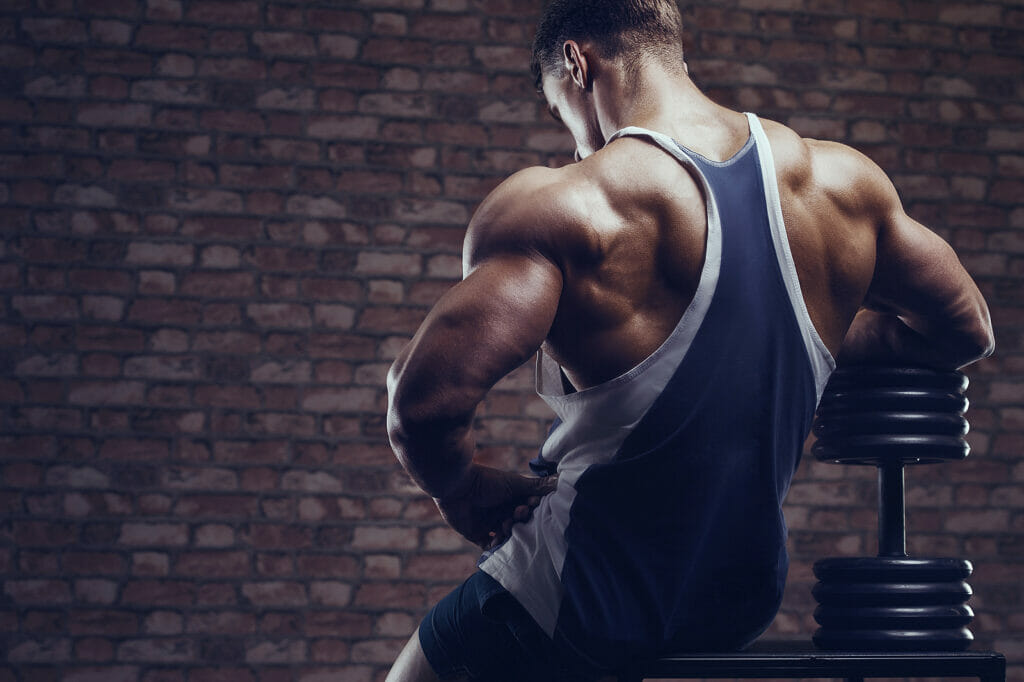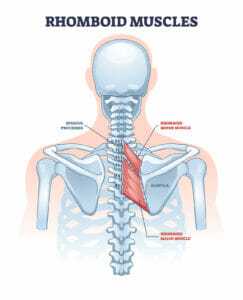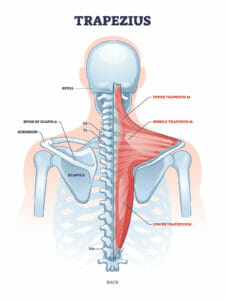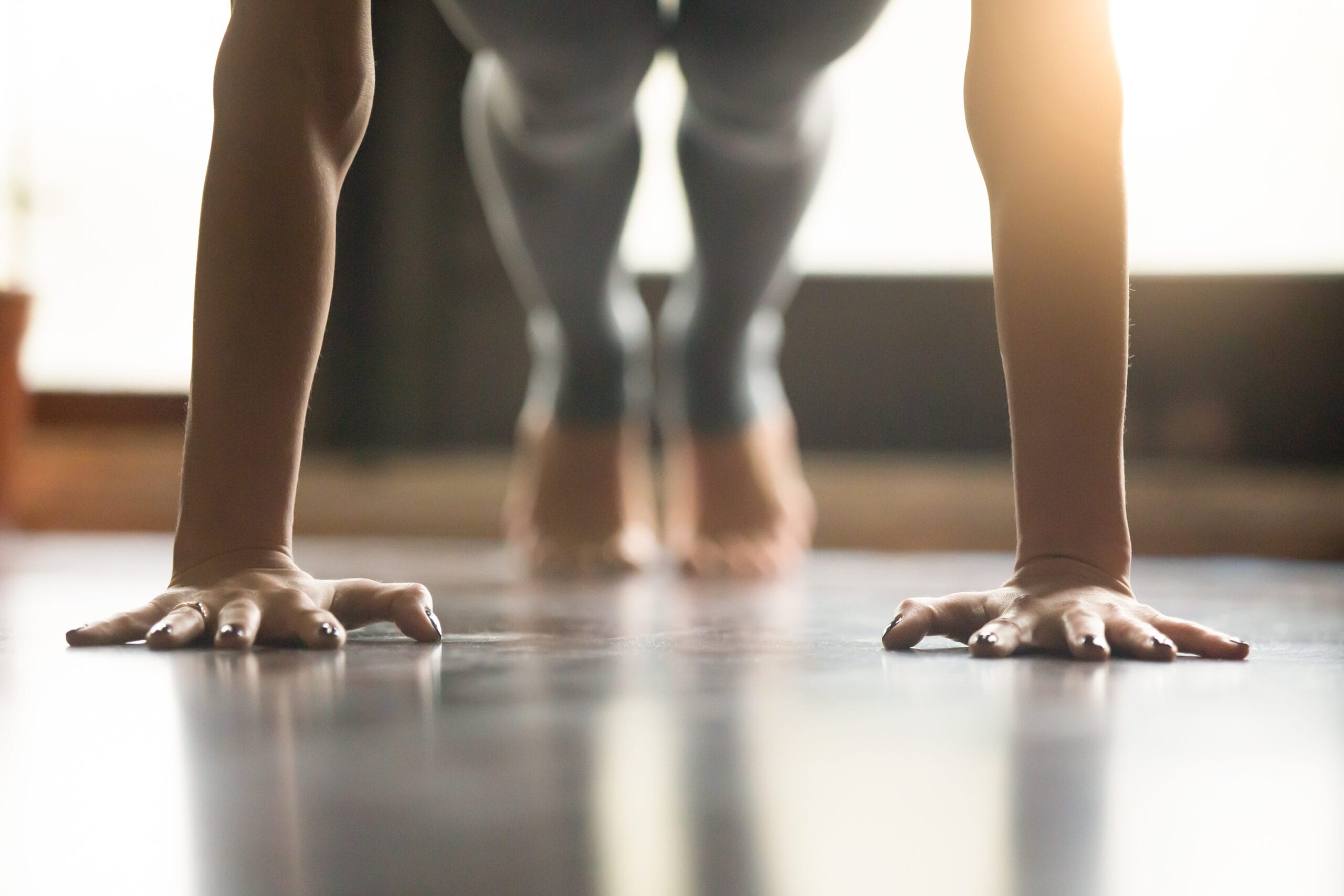
The middle back isn’t the most glamorous muscle group to focus on, especially since we can’t even see it without the help of a mirror, but it’s likely one of the most important muscle groups to strengthen.
A strong middle back can help improve posture and form while performing other lifts, but it can also help prevent shoulder pain and improve overall strength.
In other words, this is an important muscle group.
And fortunately, you don’t need a lot of fancy equipment to work your middle back – you can find ways to target these muscles with whatever gear you’ve got.
In this article, I’ll cover what muscles make up the middle back and go into a little more detail as to why they’re such an important group to work on.
Then I’ll go over some of the best middle back exercises you can do from your own home gym.
Well, let’s get to it already.
What Is The “Middle Back”?


When someone mentions chest, shoulders, or arms, we all immediately have an idea of what muscles they’re working on, but the “middle” back is a little more ambiguous.
The back is a large area with a lot of different muscles, so “middle” may not mean much to a lot of folks.
But when most people use this term, they’re actually referring to a very specific set of muscles – the ones between your shoulder blades.
More specifically, we’re talking about the rhomboids (major and minor) and the middle and lower portions of the trapezius.
The rhomboid muscles start at the bottom of your cervical spine/first several thoracic vertebrae and connect to the back of your shoulder blade.
The trapezius (“traps”) is a huge muscle we’re likely more familiar with, but we’re not interested in the upper traps here – we’re talking about the portions of the traps that are lower down our back.
The middle traps run between our shoulder blades and the lower traps start at the lower half of our thoracic spine and run up to connect to our shoulder blades as well.
So, based on where these muscles are, when they contract they mostly bring our shoulder blades together (retract them) and down (as is the case with the lower traps).
There are plenty of other muscles running through this area around our shoulder blades, but when most people refer to the middle back, they’re really talking about the rhomboids and middle/lower traps.
Why Should We Care About The Middle Back?
Ok, sure, but why should we care about these muscles in the first place?
Well, if you were paying attention, you would’ve noticed that these middle back muscles all have something in common- they connect to the shoulder blade.
Yup, the middle back is paramount when it comes to controlling the shoulder blade and having a well stabilized shoulder blade (scapula) is important for a lot of reasons.
One of the most important being that it can help prevent shoulder pain.
As a therapist, shoulder pain is one of the most common ailments I used to treat in the outpatient clinic I worked in (it’s actually still really common with the older folks I work with now in home health).
And you can call it what you want (arthritis, impingement, rotator cuff tendonitis), but it all usually stems from the same issue – poor coordination between the scapula and the humerus (your upper arm bone).
It turns out the scapula and humerus have to work together very precisely to ensure smooth motion of the shoulder.
And if the scapula is out of whack, it eventually leads to tendons getting injured and possibly even torn.
A key contributor to this is our posture – and most of us have pretty crappy posture.
The common presentation is a forward head and rounded shoulders, which usually comes from… you guessed it, sitting for long periods in front of a computer.
Well, with this posture, your pecs get tight, your middle back muscles get weak, and the control of your shoulder blades becomes diminished.
So, when treating folks with shoulder pain, a big part of what I do is try to correct that posture and rebalance that scapular control in order to improve the coupling between the scapula and the humerus during movement.
And this usually means stretching the muscles in the chest and strengthening the muscles in the middle back.
So, that’s my long-winded way of saying the middle back is important as a contributor to proper shoulder function, but having a strong middle back is also beneficial for weight lifting.
With a stronger back, you’ll obviously be able to perform heavier rows, but you’ll also be better equipped to stabilize your shoulders while performing bench presses, shoulder presses, and even dead lifts/squats.
6 Middle Back Exercises You Can Do From Home
So, the middle back muscles run between our shoulder blades and help bring our shoulder blades together and down, so in order to target them, we have to do exercise that involve these shoulder blade movements.
In other words, rows.
Luckily, there are a lot of different variations on this popular exercise, so boredom doesn’t have to be an issue.
#1. Bent Over Row
The bent over row should be a staple on any back day because it hits pretty much every muscle back there, not to mention your arms, glutes, and hamstrings too.
You can also do this exercise with a barbell, dumbbells, a cable machine, or even resistance bands – basically any type of resistance gear you got.
I like to go heavier with this move and do it near the beginning of my back workout, but you can incorporate it into your workout any way you like.
Just make sure you try to keep a neutral spine throughout the move and always keep a little bend in those knees while you hinge forward.
And focus on squeezing those shoulder blades down and together.
#2 Lunge Position Row
I have to give props for Tony Horton and P90X for introducing me to this variation all those years ago and even though my P90X days are behind me, I still love this exercise.
This is a variation of the classic knee on bench row and I know a lot of trainers don’t like that exercise, but I still do.
The problem I think is that so many people do it incorrectly or try to go to heavy and they end up working the wrong muscles.
Anyway, with the lunge position row, you’re working your core and legs too, which is always a good thing.
With this move, keep that core engaged, stretch out at the bottom, and really try to lead from the shoulder blade when rowing.
And you can use a dumbbell, kettlebell, or resistance band for this one.
#3 TRX Rows
You obviously need a TRX suspension trainer for this move, so this one might not be doable for everyone, but it’s still a wonderful exercise.
This exercise works well with the TRX suspended from a door frame and remember, the closer your feet come to the door, the harder it gets.
As always, the focus is on keeping the shoulders down and really squeezing the shoulder blades together as you row.
You can also do a killer single arm version of this for more difficulty (really hits your core too).
#4 Prone Bench Row
Putting your chest against an incline (or elevated flat) bench takes away the momentum you may build with a more traditional row, forcing you to really target the back muscles we’re trying to strengthen here.
When using an incline bench, keep in mind the higher the angle of the bench, the more awkward it might feel, so I wouldn’t bring it any higher than 45° or so.
This is probably most comfortable as a bilateral move, allowing you to work both sides at the same time, but there’s nothing stopping you from trying 1 arm at a time either.
And if you were on an elevated flat bench, you could even use a barbell for this exercise.
Just make sure you’re squeezing those shoulder blades down and together.
#5 Inverted Row (Horizontal Pull Ups)
“Inverted row” sounds better to me than “horizontal pull up”, but both terms refer to the same exercise.
And if you’ve ever tried these before, you know they’re harder than they look.
The inverted row is a great body weight exercise for targeting the middle back and they make a great addition to any workout, even for folks who are comfortable doing traditional pull ups (which tend to hit the lats more).
To do this move, you need a rack or Smith machine, but you could also make it work with a TRX.
The key is to keep your core tight and bringing your lower chest toward the bar (instead of your chin) will help you focus on keeping those scapulae retracted and depressed.
#6 Kneeling Single Arm Cable Row
This is a great exercise for engaging the lower traps and you need to make sure you’re confident with your ability to depress that shoulder blade before attempting.
I’d recommend practicing this movement without resistance to ensure you can effectively perform this shoulder blade movement correctly before adding weight.
Speaking of weight, it’s a good idea to keep the weight low and really focus on form – higher reps and lower weight is a smart move for this one.
And even though this is a cable machine exercise, you can easily do it with a resistance band set up on a door frame too.
We used to do this one a lot in the clinic – great exercise to help get that lower trap more involved.
Final Thoughts
When it comes to working the middle back, it’s really all about rows.
When the rhomboids and middle/lower traps contract, they cause the shoulder blades to come together and come down, so these are the movements we have to do in order to target these middle back muscles.
But don’t worry, there are a ton of rowing exercises out there and they can all pretty much be effective middle back moves, as long as you focus on squeezing those shoulder blades together.
And when it comes to overall shoulder health, a strong middle back is really important, so please don’t neglect them on back day.


